Solar Choice Solar PV Price Check - May
The average price for installing a solar system at the beginning of May 2013 is down slightly from the previous month.
System prices in Sydney, despite having risen slightly on average from April 2013, remain the lowest in Australia for all system sizes (1.5kW-5kW). Canberra and Perth continue to see gradual price reductions for all system sizes. Prices in Melbourne, Brisbane, and Adelaide have seen a reversal in the increases of the previous month, with price decreases of varying degrees in all three cities for all system sizes. Meanwhile, Hobart system prices have either remained steady or risen.
Average out-of-pocket cost for solar PV systems by size and city
The table below shows the average of the prices on offer for installed solar PV systems (after subsidy) of all sizes in Australia’s major cities at the beginning of May. Sydney is home to the lowest average system prices in each system size category; Hobart is the highest.
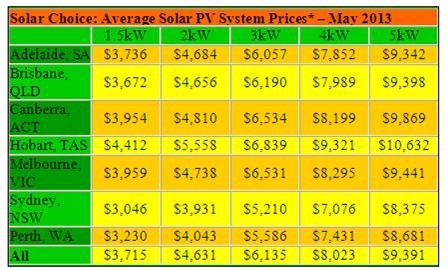
*Incorporates federal STC discount
$/watt solar system prices: Average, highs, lows
The table below contains dollar per watt ($/W) price data for 1.5kW, 2kW, 3kW, 4kW and 5kW solar PV systems in the seven cities included in the PV Price Index (Darwin is not included at this point in time). Prices include the federal government’s small-scale technology certificate (STC) subsidy for solar power and other renewable energy sources.
For May 2013, STCs helped to decrease system prices in Zone 3 cities (Adelaide, Brisbane, Canberra, Sydney, and Perth) by an average 63c/W. In less sunny Zone 4 cities (Hobart, Melbourne), the contribution of STCs was approximately 53c/W, calculated based on the STC discounts explicitly detailed by installers, when available – i.e.when not omitted as part of a ‘package deal’. The rough ‘subsidy-free’ price of a solar PV system can therefore be calculated by adding this amount to the figures in the table below.
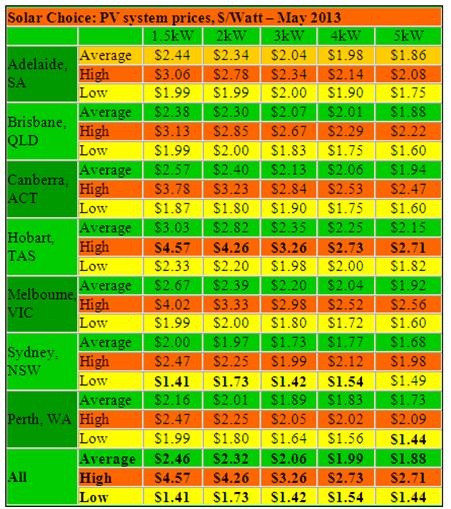
Solar PV system prices to date
Solar Choice has been compiling solar PV price data since August 2012. The charts below show the monthly movements in (subsidised) system prices since then.
Although system prices are anticipated to increase through 2013, a steady upward trend has not thus far been observable in the data from the Solar Choice installer database. With the exception of 1.5kW systems, the average price for all system sizes is now either lower or about the same as what it was in August 2012.
Prices did fall across the board at the end of the 2012 calendar year, and increases could thereafter distinctly visible for the first 1-3 months of 2013, but this trend seems to have levelled out over the past two months – especially for the larger system sizes (3kW, 5kW).
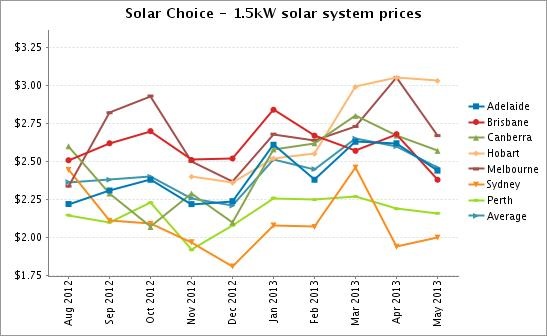
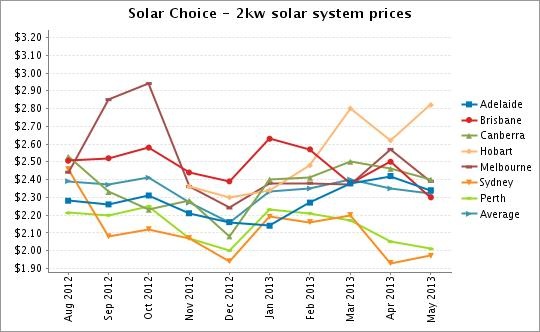
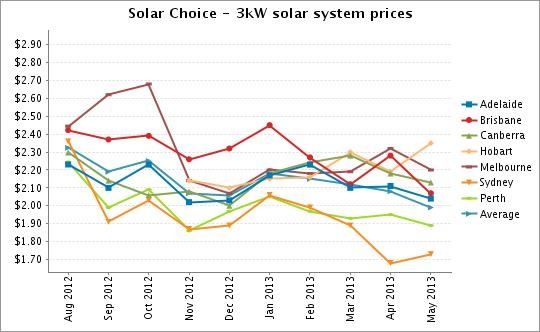
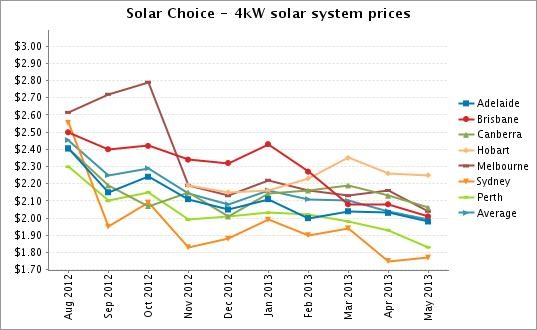
About this data
All figures are based on the offerings of active installers on the Solar Choice installer network for each of the six major capital cities. The system prices above do not reflect the average prices at which systems are ultimately purchased.
About Solar Choice
Solar Choice works with 100 solar PV installers in providing free and impartial Solar Quote Comparisons for customers throughout Australia. Solar Choice Commercial manages tenders for a wide range of commercial-scale solar PV projects throughout Australia, including solar farms and utility-scale solar PV plants.

















